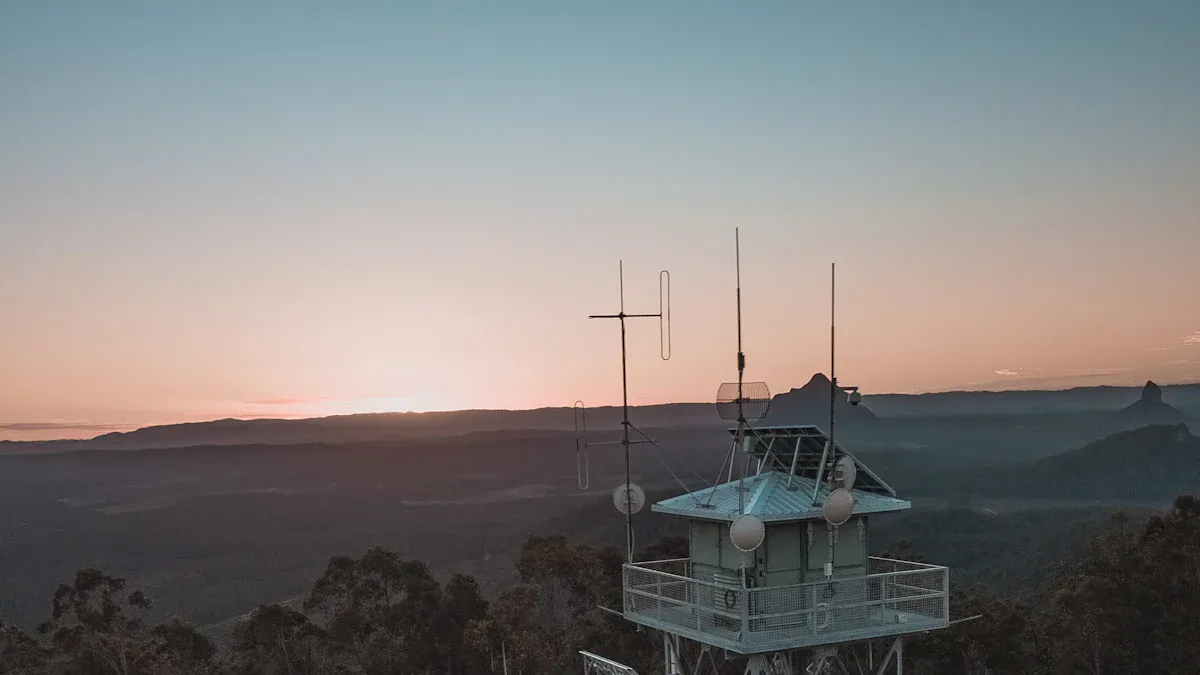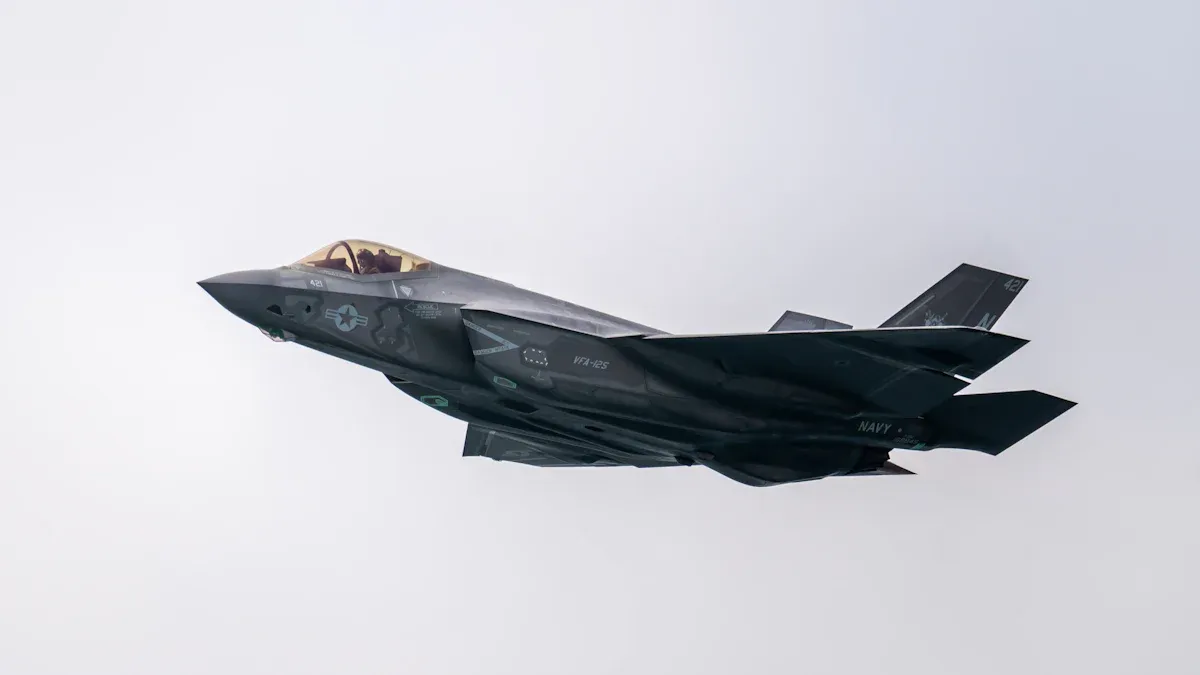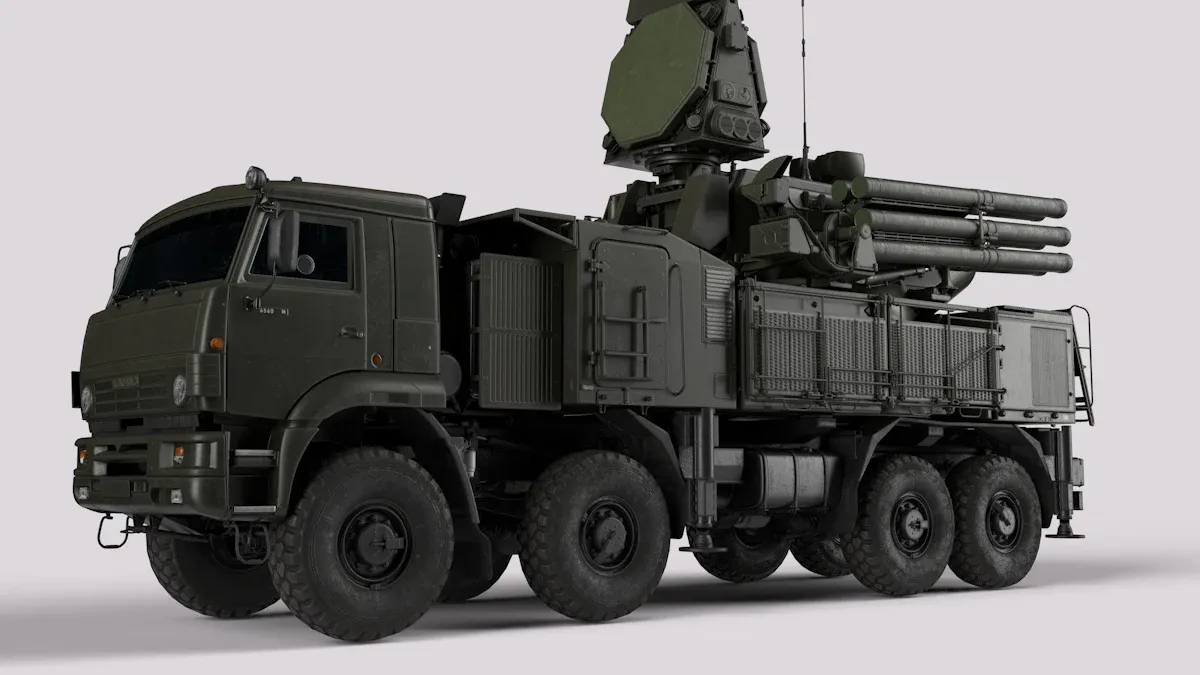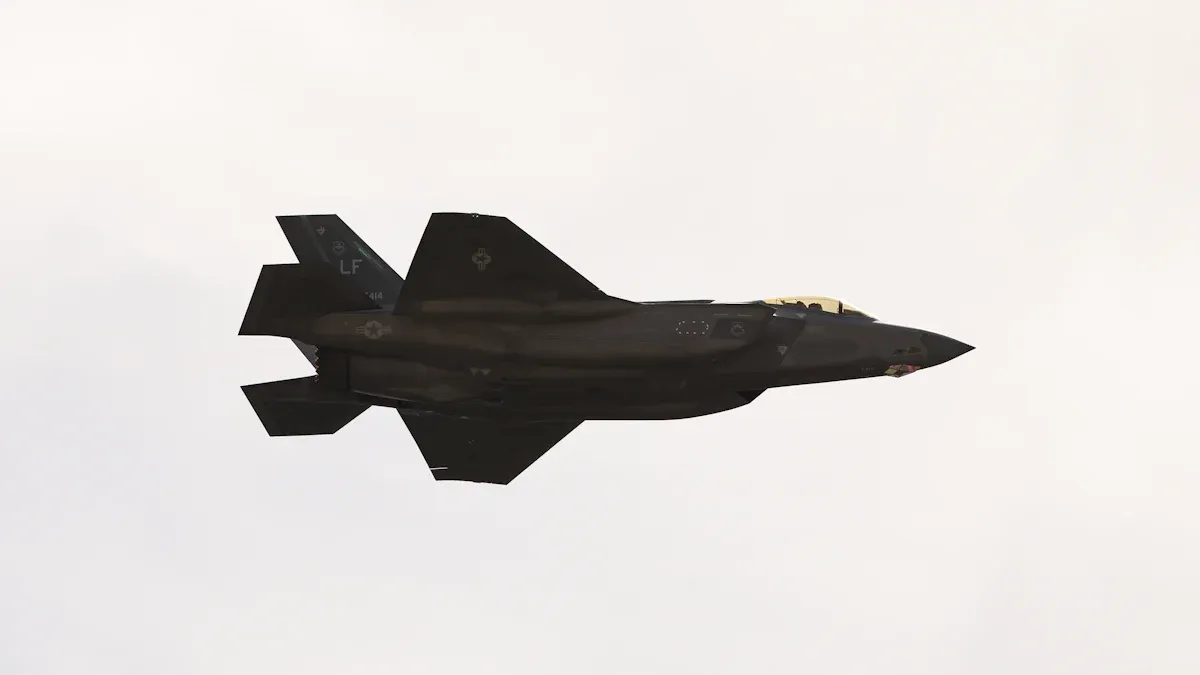Nexperia Showcases Cutting-Edge Solutions for ADAS Radar Systems

Advanced Driver Assistance Systems (ADAS) use radar technology to enhance safety and improve driving experiences. These systems play a vital role in reducing accidents and supporting autonomous vehicle functions. Road crashes cause over 1 million deaths annually worldwide, highlighting the need for advanced safety measures. In 2021, over 9.6 billion automotive sensors were sold globally, demonstrating the growing reliance on innovative technologies. The global ADAS radar systems market, valued at USD 12.16 billion in 2024, is projected to exceed USD 42.98 billion by 2037. Nexperia, a trusted Nexperia Distributor, leads this evolution by delivering cutting-edge semiconductor solutions tailored for radar systems.
Key Takeaways
ADAS radar systems make cars safer with features like cruise control and emergency braking.
Regular checks and built-in tools in radar systems help spot objects correctly, lowering accident risks.
Nexperia's chips are tough and work well in bad conditions, making them reliable for cars.
Using AI and machine learning in radar makes it better at spotting objects and avoids mistakes, helping create smarter cars.
Nexperia's ADAS Radar Systems Guide gives helpful tips to engineers for solving design problems and improving radar systems.
The Current Landscape of ADAS and Automotive Radar Technology

Applications of Radar Systems in ADAS
Radar systems play a pivotal role in ADAS by enabling advanced safety features and enhancing driving experiences. Front radars support Adaptive Cruise Control (ACC) and Forward Collision Warning (FCW), ensuring vehicles maintain safe distances and avoid collisions. Side radars assist in Blind Spot Detection and Lane Change Assist, alerting drivers to potential hazards during maneuvers. Automatic Emergency Braking (AEB) relies on radar to detect obstacles and initiate braking, preventing accidents.
The effectiveness of radar technology in collision avoidance varies across applications. Frontal millimeter-wave radars achieve 19.6% effectiveness in preventing frontal collisions, while side radars excel with 32.7% effectiveness in avoiding side impacts. These systems demonstrate radar's critical role in improving vehicle safety and reliability.
Enhancing Safety and Autonomy with Radar Technology
Radar technology enhances both safety and autonomy in modern vehicles. Regular calibration of radar sensors ensures accurate object detection, preventing false alarms or missed hazards. Misalignment or damage can compromise safety features, increasing accident risks. Engineers use advanced testing systems, such as the Vehicle Radar Test System (VRTS), to validate radar performance and meet evolving safety regulations.
Embedded diagnostics in radar systems further improve reliability. For example, 6-axis IMUs with self-diagnosis capabilities alert systems to malfunctions, ensuring consistent performance in velocity control and braking. These advancements contribute to safer driving experiences and pave the way for more autonomous vehicle functions.
Key Technologies Shaping the ADAS Radar Ecosystem
Several key technologies drive innovation in the ADAS radar ecosystem. Semiconductor evolution has transitioned from GaAs to SiGe and now to Si CMOS, enabling higher integration and cost reduction. Packaging innovations, such as Fan-Out Wafer-Level Packaging (FOWLP), allow for more compact designs and improved performance.
The development of 4D imaging radar chips with up to 6,500 virtual channels enhances resolution and data collection, supporting advanced object tracking and environmental mapping. These advancements enable radar systems to deliver higher accuracy and reliability, meeting the demands of modern ADAS applications.
Key Technology | Description |
|---|---|
Semiconductor Evolution | Transition from GaAs to SiGe and now to Si CMOS, allowing higher integration and cost reduction. |
Packaging Innovations | Shift from CoB to FOWLP, enabling more compact designs and improved performance. |
4D Imaging Capability | Development of radar chips supporting 6,500 virtual channels for enhanced resolution and data collection. |
Nexperia's Innovations in ADAS Radar Systems

Semiconductor Solutions Tailored for Automotive Radar
Nexperia has developed semiconductor solutions specifically designed to meet the rigorous demands of automotive radar technology. These solutions address challenges such as shock, vibration, and extreme temperatures, ensuring reliable performance in diverse driving conditions. Unlike standard semiconductors, automotive radar components must comply with stringent standards like AEC-Q200, which guarantees their durability and safety in vehicles.
Automotive radar systems also excel in medium- to long-range measurements, making them indispensable for applications like adaptive cruise control and collision avoidance. Nexperia leverages advanced CMOS technology to produce cost-effective solutions while integrating higher-frequency materials for enhanced performance. This approach ensures that radar systems remain both efficient and affordable for mass-market adoption.
Key features of Nexperia's semiconductor solutions include:
High reliability under extreme environmental conditions.
Compatibility with advanced radar frequencies, such as 140 GHz, for improved signal integrity.
Compact designs that reduce signal loss and enhance integration into modern vehicles.
These innovations highlight Nexperia's commitment to advancing radar technology and meeting the evolving needs of autonomous vehicle technology.
Insights from Nexperia's ADAS Radar Systems Techbook
Nexperia's ADAS Radar Systems Techbook serves as a comprehensive guide for engineers and designers working on automotive radar systems. This resource provides detailed insights into radar technologies, their functional components, and the challenges faced during system design. By addressing these complexities, the techbook empowers engineers to create reliable and high-performing radar solutions.
The techbook covers several critical topics, including:
Trends in radar system applications and their impact on vehicle safety.
Practical solutions for overcoming design challenges, such as power efficiency and signal interference.
A curated list of Nexperia's recommended products for power and signal electronics.
Engineers can use this techbook to make informed decisions that enhance the performance and reliability of radar systems. It also offers valuable guidance on integrating radar sensors into vehicles without significantly increasing costs. This makes it an essential tool for those aiming to innovate in the field of autonomous vehicle technology.
Tip: Downloading Nexperia's techbook provides access to a wealth of knowledge, enabling engineers to navigate the complexities of radar system design with confidence.
Real-World Impact of Nexperia's Technologies in Autonomous Vehicle Technology
Nexperia's innovations have a tangible impact on the development of autonomous vehicle technology. By providing high-performance semiconductor solutions, the company enables vehicles to achieve greater levels of safety and autonomy. For instance, Nexperia's radar systems support critical functions like adaptive cruise control, lane-keeping assistance, and automatic emergency braking.
These technologies enhance the ability of vehicles to detect and respond to their surroundings, even in adverse weather conditions. The integration of advanced radar sensors ensures accurate object detection, which is vital for collision avoidance and navigation in complex environments.
Nexperia's contributions also extend to improving the scalability of radar systems. Compact and cost-effective designs make it easier for manufacturers to adopt these technologies across a wide range of vehicle models. This scalability accelerates the adoption of autonomous vehicle technology, bringing the industry closer to achieving full autonomy.
By addressing key challenges and delivering innovative solutions, Nexperia plays a pivotal role in shaping the future of automotive radar technology.
Addressing Challenges in Automotive Radar Technology

Tackling Power Efficiency and Miniaturization
Power efficiency and miniaturization are critical challenges in automotive radar technology. Modern radar systems must balance high performance with low power consumption to meet the demands of electric and autonomous vehicles. Engineers focus on optimizing transmitter power and sampling rates to improve detection range without increasing energy usage. Enhancing power amplifier efficiency and addressing thermal issues also play a significant role in achieving this balance.
Miniaturization efforts aim to reduce the size of radar components while maintaining functionality. Advanced packaging techniques, such as Fan-Out Wafer-Level Packaging (FOWLP), enable compact designs that integrate seamlessly into vehicles. These innovations not only save space but also enhance signal integrity by minimizing losses.
Key benchmarks for evaluating improvements in power efficiency and miniaturization include:
Range: The distance at which the radar detects objects.
Range Resolution: The ability to distinguish between closely spaced objects.
Velocity Resolution: The capability to measure the speed of objects.
Angle Resolution: The precision in determining object positions and trajectories.
These metrics highlight the importance of balancing performance with efficiency in radar system design.
Overcoming Signal Interference and Performance Barriers
Signal interference poses a significant challenge for radar systems, particularly in crowded urban environments. Interference from other radar systems, environmental factors, and electronic devices can degrade performance. Engineers address these issues through advanced signal processing algorithms and machine learning techniques. These methods enhance spatial resolution and mitigate interference, ensuring reliable operation.
Documented case studies illustrate the effectiveness of these approaches. For example:
Automotive radars improve spatial resolution and interference mitigation using advanced algorithms.
Navtech Radar reduced errors by 30% and administrative tasks by 50% through digital work instructions, enhancing manufacturing processes.
Performance barriers also include limitations in detecting objects under adverse conditions, such as heavy rain or fog. Embedded diagnostics and self-calibrating systems improve reliability by ensuring accurate object detection. These advancements contribute to safer and more efficient radar systems.
Evidence Type | Findings |
|---|---|
Crash Reduction | 8% reduction in crashes observed with Vehicle Speed Limit (VSL) systems |
Speed Variation | Small speed variation reported with reliable sensors |
Traffic Safety | Positive effects on mobility, safety, and environment |
Solutions for Scalability and Mass Market Adoption
Scalability and mass market adoption of radar systems depend on cost-effective designs and regulatory compliance. Compact and affordable radar solutions enable manufacturers to integrate these systems across various vehicle models. Nexperia’s innovations in semiconductor technology address these needs by offering high-performance components at competitive prices.
Global market trends underscore the growing demand for radar systems. North America leads in market share due to high adoption rates of ADAS and autonomous vehicles. Asia-Pacific is expected to experience substantial growth by 2033, driven by the rise of electric vehicles and smart city initiatives. The global market is projected to grow from USD 7.1 billion in 2024 to USD 87.0 billion by 2033, with a compound annual growth rate (CAGR) of 32.10%.
Region | Market Share/Trend Description |
|---|---|
North America | Largest market share in 2024 due to high demand for ADAS and autonomous vehicles. |
Asia-Pacific | Expected substantial market share by 2033, driven by rapid growth in EVs and autonomous vehicles. |
Global Market | Projected growth from USD 7.1 billion in 2024 to USD 87.0 billion by 2033, with a CAGR of 32.10%. |
Regulatory Impact | Stringent safety regulations globally are increasing the adoption of radar systems in vehicles. |
China | Government initiatives for smart cities and pedestrian safety are enhancing radar system adoption. |
India | Significant increase in ADAS technology adoption due to urbanization and safety awareness. |
Japan | Strong regulatory framework around autonomous vehicles is fueling demand for long-range radar (LRR) systems. |
These trends highlight the importance of scalable and cost-efficient radar solutions in meeting the growing demand for advanced driver assistance systems.
Future Trends in ADAS and Nexperia's Vision

Advancing Radar Technology for Full Autonomy
The journey toward full autonomy in vehicles relies heavily on advancements in radar technology. Enhanced radar systems now detect smaller objects and differentiate between various obstacles, improving safety and decision-making. The transition from 2D to 3D radar imaging provides a detailed three-dimensional view of a vehicle's surroundings, enhancing spatial awareness and object detection accuracy.
Micro-Doppler and imaging radar systems further refine detection capabilities by analyzing subtle changes in radar signatures. These systems can identify pedestrians, cyclists, and other vehicles with remarkable precision. Such advancements are critical for achieving Level 5 automation, where vehicles operate without human intervention.
Key Statistic | Value |
|---|---|
Percentage of vehicles using radar for ADAS | Over 65% |
Percentage of new product developments in multi-mode and imaging radar | Over 30% |
Percentage of global OEMs investing in in-house radar design | Over 40% |
Integrating AI and Machine Learning in Radar Systems
Artificial intelligence (AI) and machine learning (ML) are transforming radar systems by making them more adaptive and intelligent. These technologies enhance radar signal processing, enabling better object distinction and movement prediction. For example, AI-powered algorithms classify sleep phases from raw radar data, improving the accuracy of sleep monitoring.
Machine learning also plays a role in stress monitoring setups, where radar analyzes heart rate variability and respiration features. Self-attention deep learning networks predict photoplethysmography (PPG) waveforms from radar data, advancing non-invasive vital sign monitoring. These applications demonstrate how AI and ML improve radar performance, paving the way for smarter and safer vehicles.
Nexperia's Role in Shaping the Future of Automotive Radar Technology
Nexperia continues to lead the charge in advancing automotive radar technology. The company supplies essential semiconductor components for power management, signal conditioning, and communication interfaces. By focusing on miniaturization and design simplification, Nexperia supports the development of efficient radar systems.
Nexperia's innovations address challenges in power management and communication reliability, enhancing the safety and intelligence of ADAS sensors. The company’s expanding portfolio of integrated solutions ensures that radar systems meet the demands of modern vehicles. These contributions solidify Nexperia's role as a key player in shaping the future of automotive radar technology.
ADAS radar systems have revolutionized the automotive industry by enhancing safety and enabling advanced vehicle autonomy. The shift toward 77GHz radar systems has improved resolution and detection range, making them indispensable for critical safety features. AI integration further refines object detection, reducing false alarms and boosting efficiency. Regulatory changes in Europe, North America, and China continue to drive the adoption of these technologies.
Nexperia's innovative semiconductor solutions play a pivotal role in this transformation. Their focus on reliability, cost-effectiveness, and scalability ensures radar systems meet the demands of modern vehicles. By addressing design challenges and advancing radar technology, Nexperia remains at the forefront of autonomous vehicle innovation.
Note: The automotive radar market's rapid evolution underscores the importance of Nexperia's contributions in shaping a safer and smarter future.
Evidence Type | Description |
|---|---|
Market Trends | The automotive radar market is shifting to 77GHz systems for better safety. |
Technological Advancements | AI integration enhances detection and reduces false alarms. |
Regulatory Influences | Safety regulations drive radar adoption in new vehicle models. |
What makes radar systems essential for ADAS?
Radar systems provide precise object detection and distance measurement. These capabilities enable critical safety features like adaptive cruise control and collision avoidance. Their reliability in various weather conditions makes them indispensable for modern vehicles.
How does Nexperia address radar system design challenges?
Nexperia offers advanced semiconductor solutions that enhance power efficiency, reduce signal interference, and support miniaturization. These innovations ensure radar systems meet the demands of safety and scalability.
What is the role of Nexperia's ADAS Radar Systems Techbook?
The techbook serves as a guide for engineers. It provides insights into radar technologies, design challenges, and recommended products. This resource empowers designers to create reliable and cost-effective radar systems.
How do Nexperia's innovations impact autonomous vehicles?
Nexperia's semiconductor solutions improve radar performance, enabling accurate object detection and navigation. These advancements accelerate the adoption of autonomous vehicle technology by enhancing safety and scalability.
What future trends will shape ADAS radar systems?
Future trends include 4D imaging radar, AI integration, and advancements in micro-Doppler technology. These innovations will improve object detection, spatial awareness, and decision-making, paving the way for fully autonomous vehicles.
See Also
Explore The Essential Automotive Features Of FREESCALE MCF5251CVM140
Enhancing Automotive Performance Using NXP Microcontrollers MC9S12 Series
An In-Depth Look At AD1940YSTZ And AD1941YST Automotive DSPs
AD9736BBCZ: Pioneering The Next Generation Of Wireless Communication
CALL US DIRECTLY
(+86)755-82724686
RM2508,BlockA,JiaheHuaqiangBuilding,ShenNanMiddleRd,Futian District,Shenzhen,518031,CN
www.keepboomingtech.com sales@keepboomingtech.com
